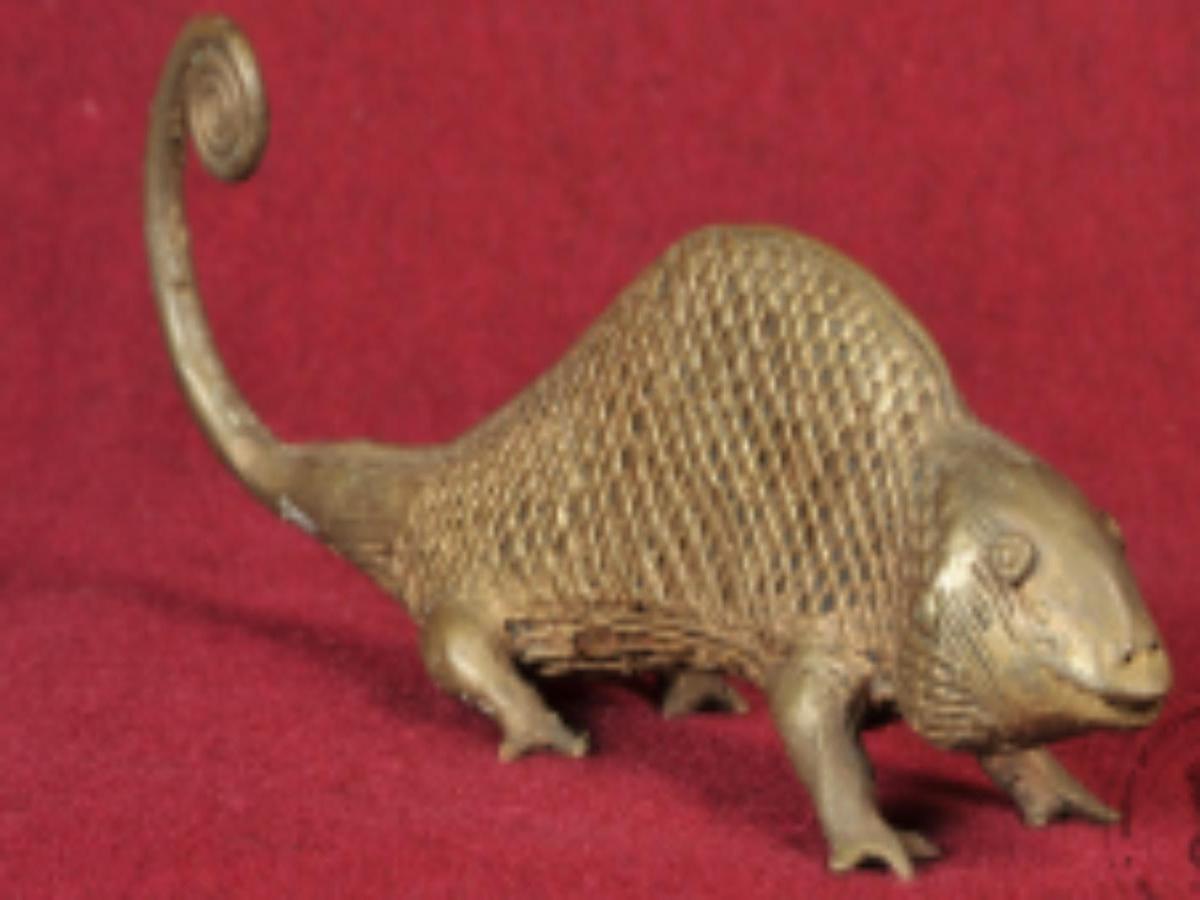State
Tribe Name
Art Type
short description
It has been a wonderful sight to see and admiring example of traditional tribal metalwork, this beautifully made lizard figure by the Gunsur Malias tribe. This sculpture cast in brass has been made by the lost-wax process it shows artistic finesse and cultural depth. The lost-wax technique is an ancient technique where a wax model is melted and replaced by molten metal. This technique makes available very delicate and durable shapes with every fine detail. The lizard depicts four well-defined legs and a coiled tail; each limb gives a dynamic energy to the otherwise static sculpture. A ridge runs from the neck to the point where the tail joins the body, giving surface texture and anatomical accuracy to the figure. The convex shape of the lizard's body gives it volume while also showing the form to have almost tactile and realistic characteristics. Its surface, further, is adorned with rhomboid patterns, a design motif generally employed by the Gunsur Malias, symbolizing continuity and balance of nature.
Thumbnail

Filter Postion
Left
Filter Background
Off
Theme
Filter Header Image

content
Image

description
It has been a wonderful sight to see and admiring example of traditional tribal metalwork, this beautifully made lizard figure by the Gunsur Malias tribe. This sculpture cast in brass has been made by the lost-wax process it shows artistic finesse and cultural depth. The lost-wax technique is an ancient technique where a wax model is melted and replaced by molten metal. This technique makes available very delicate and durable shapes with every fine detail. The lizard depicts four well-defined legs and a coiled tail; each limb gives a dynamic energy to the otherwise static sculpture. A ridge runs from the neck to the point where the tail joins the body, giving surface texture and anatomical accuracy to the figure. The convex shape of the lizard's body gives it volume while also showing the form to have almost tactile and realistic characteristics. Its surface, further, is adorned with rhomboid patterns, a design motif generally employed by the Gunsur Malias, symbolizing continuity and balance of nature.
Lizards have significance in many tribal cultures because they embody attributes like nimbleness and alertness, regenerating abilities for which they are admired, and in certain cases spiritually valued. The association between the lizard and the human tribe defines the close identity they have in terms of culture. It is a testimony to the technical mastery of the Gunsur Malias tribe while adding to the cultural value of their heritage and artistic beliefs in the animals cohabitate with them.
Lizards have significance in many tribal cultures because they embody attributes like nimbleness and alertness, regenerating abilities for which they are admired, and in certain cases spiritually valued. The association between the lizard and the human tribe defines the close identity they have in terms of culture. It is a testimony to the technical mastery of the Gunsur Malias tribe while adding to the cultural value of their heritage and artistic beliefs in the animals cohabitate with them.
Image Mode
landscape
promoted
On
Verified
Off
